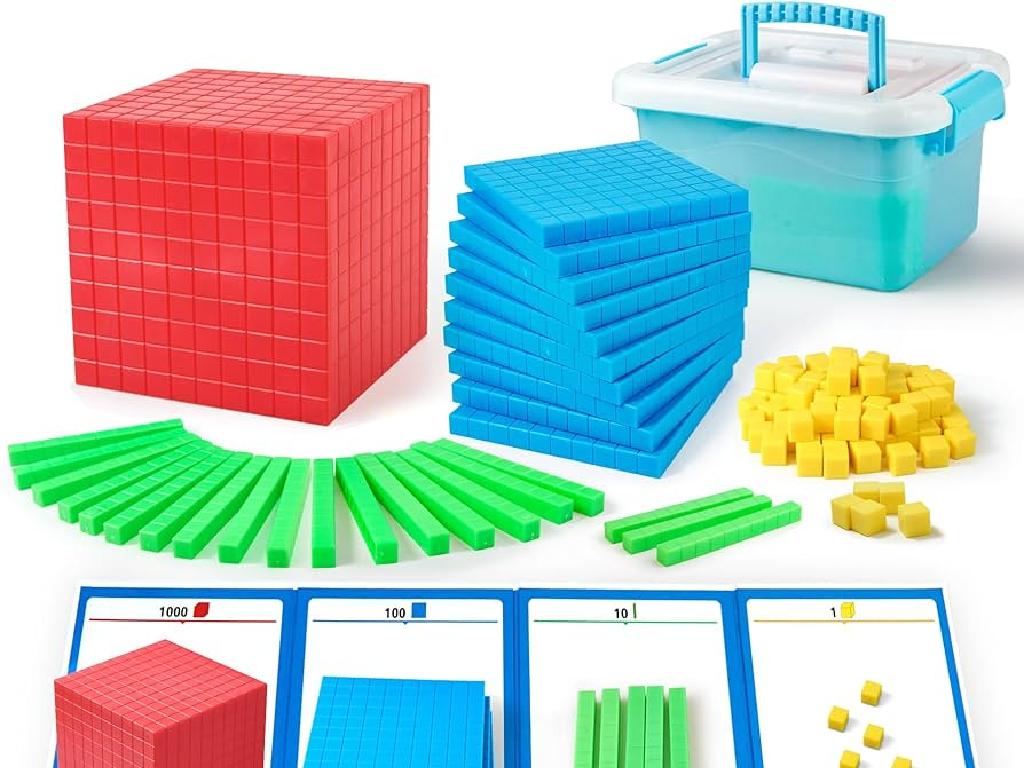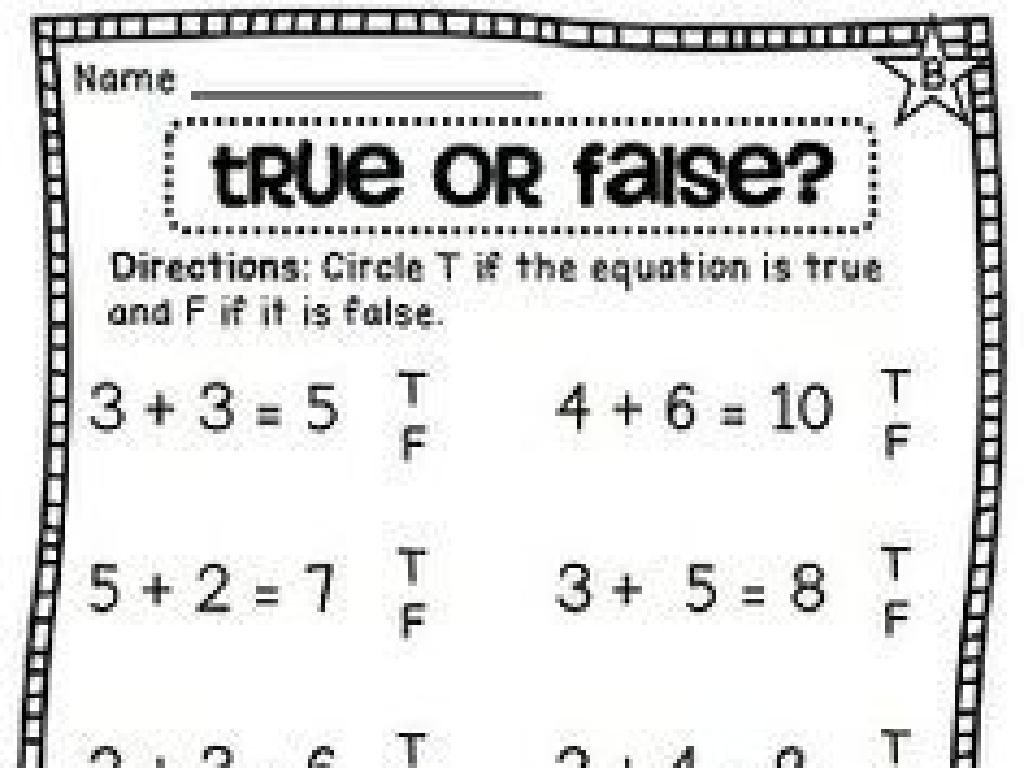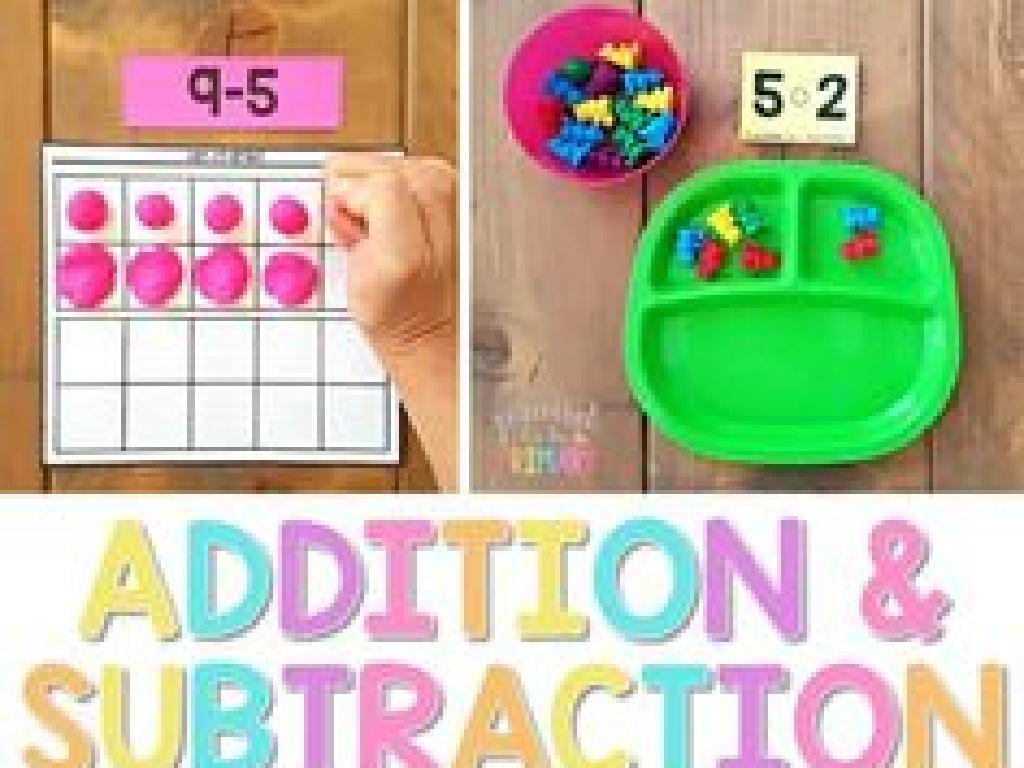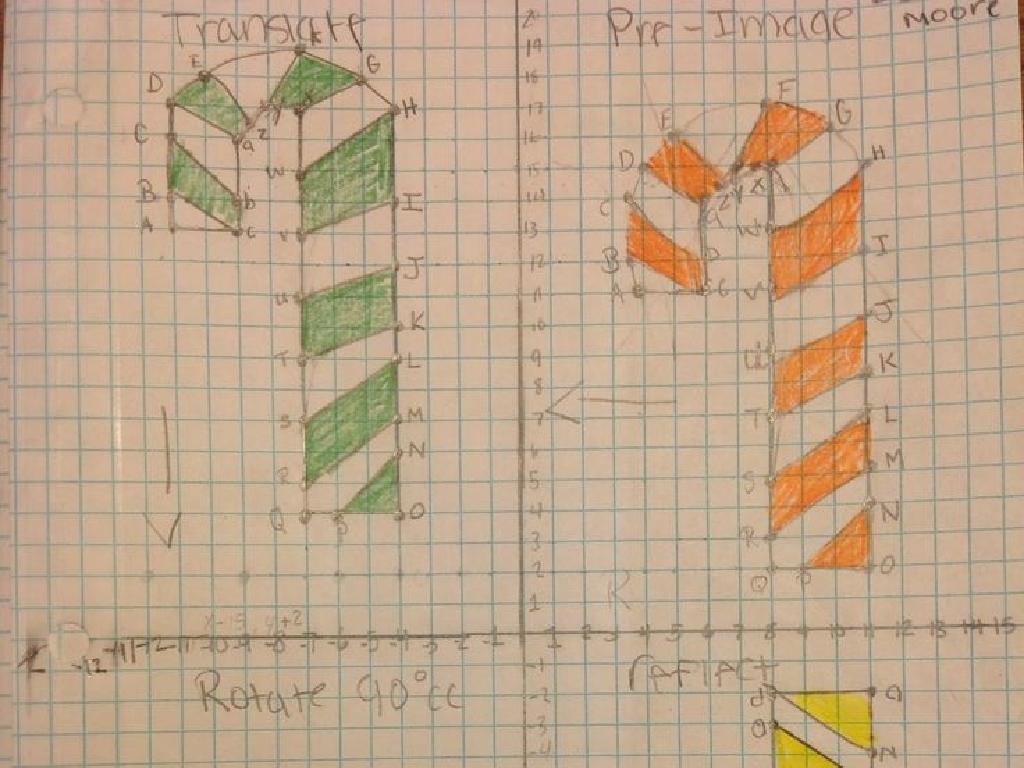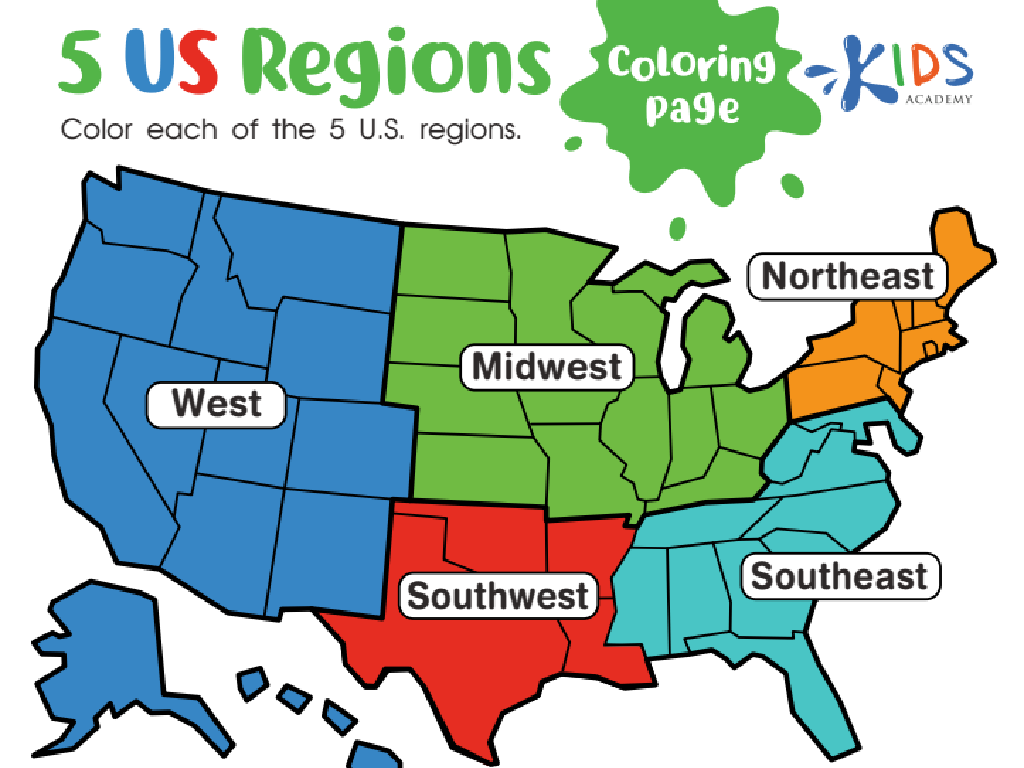Count Sides
Subject: Math
Grade: Kindergarten
Topic: Two-Dimensional Shape Attributes
Please LOG IN to download the presentation. Access is available to registered users only.
View More Content
Welcome to Shapes: Exploring Sides
– Greet our little explorers
– Today’s focus: Shapes and sides
– Shapes like squares, triangles, and rectangles
– Can you spot shapes around?
– Look around to find shapes in the classroom
– Shapes have different sides
– Count the lines that make up a shape
|
Begin the class with a warm and engaging greeting to capture the students’ attention. Introduce the concept of shapes and explain that today’s lesson will focus on understanding and identifying the sides of different shapes. Encourage the children to observe their surroundings and name the shapes they can find in the classroom or objects they are familiar with. Explain that shapes are made up of lines connected together, and these lines are called sides. Use simple language and be prepared with real-life examples or shape cutouts to help them visualize and count the sides. This interactive approach will help kindergarteners grasp the concept of sides in a fun and memorable way.
Exploring Shapes and Their Sides
– Shapes are everywhere
– Shapes have sides
– Sides are the lines that make a shape
– Count sides of shapes
– Triangles have 3, rectangles have 4
– Recognize common shapes
– Like squares, circles, and triangles
|
This slide introduces kindergarteners to the concept of shapes and their sides. Start by explaining that shapes are all around us in our daily lives. Highlight that shapes can be identified by the number of sides they have. Use physical props or images to show common shapes such as triangles, squares, and rectangles, and guide the children to count the sides. Encourage the students to look around the classroom or at home to find these shapes in their environment. This activity will help them recognize and differentiate shapes by the number of sides they have.
Meet the Circle: No Sides!
– A circle is round
– Circles have 0 sides
– It’s one continuous curve with no edges
– Compare to cookies or wheels
– Look at cookies or wheels to see circles
– Understanding the circle
– Circles are everywhere! They roll and spin without corners
|
This slide introduces the concept of a circle to Kindergarten students, emphasizing its round shape and lack of sides. Use everyday objects like cookies and wheels to help children visualize and understand the shape. Explain that unlike squares or triangles, circles do not have corners or sides; they are a continuous curve. Encourage the students to look for circular objects in the classroom or at home to reinforce the concept. Activities can include tracing circles, looking for circular objects during a walk, or even a circle-based craft to make learning interactive and fun.
Triangle Time: Counting Sides
– A triangle has three sides
– Like a mountain or a slice of pizza
– Triangles in everyday life
– See triangles in mountains, pizza slices, and party hats
– Counting sides together
– Let’s point and count: 1, 2, 3!
|
This slide introduces the concept of a triangle by relating it to familiar objects like mountains and pizza slices, which helps kindergarteners understand the shape in a fun and relatable way. Encourage the students to visualize and identify triangles in their surroundings. During the activity, guide them to count the sides of a triangle aloud together, reinforcing the number of sides a triangle has. This interactive approach helps solidify their understanding of the shape and its properties. Make sure to praise their efforts to build confidence and engagement.
Square Fun: Learning to Count Sides
– A square has four sides
– Each side is the same length
– Squares are everywhere!
– Like crackers or windows
– Let’s count a square’s sides together
– Practice by counting: 1, 2, 3, 4
|
This slide is designed to introduce Kindergarten students to the concept of a square and its attributes. Start by explaining that a square is a special shape with four sides that are all the same length. Use everyday objects like crackers or windows to help them relate to the shape. Then, engage the students in a fun counting activity where they count the sides of a square out loud together. This interactive approach helps solidify their understanding of the square’s properties and supports their counting skills. Encourage the students to look for square objects in the classroom or at home to reinforce the lesson.
Rectangle Riddle: Counting Sides
– A rectangle is a stretched square
– It has 4 sides: 2 long and 2 short
– Like a square but with 2 sides longer
– Count the short sides together
– Let’s count: 1 short side, 2 short sides
– Count the long sides together
– Now count: 1 long side, 2 long sides
|
This slide introduces kindergarteners to the concept of a rectangle and its sides. Start by explaining that a rectangle looks like a square that has been stretched out. Highlight that a rectangle has four sides in total, with two sides being longer than the other two. Engage the students by having them count the sides aloud with you. For the short sides, count ‘one short side, two short sides’ and for the long sides, count ‘one long side, two long sides’. This activity helps students visually and verbally identify the sides of a rectangle, reinforcing their understanding of shapes and their attributes.
Let’s Practice Counting Sides!
– Look at different shapes
– Count the sides together
– Sides are lines that make a shape
– For example, a triangle has 3 sides
– Practice makes perfect
– Keep practicing with more shapes
|
This slide is designed to be interactive and engaging for Kindergarten students. Begin by showing them a variety of two-dimensional shapes such as triangles, rectangles, squares, and pentagons. Encourage the students to count the sides of each shape out loud together. Reinforce the concept that sides are the lines that outline the shape. Use simple language and real-life examples, like drawing shapes in the air or on the board. As an activity, you can have the students draw their shapes on paper and count the sides, or use physical shape cutouts for them to touch and count. The goal is to make them comfortable with identifying and counting sides of different shapes through repetition and practice.
Class Activity: Shape Hunt
– Let’s go on a Shape Hunt!
– Find shapes around the classroom
– Look for circles, squares, triangles
– Count the sides of each shape
– Use your fingers to point and count
– Share your shapes with the class
|
This activity is designed to help Kindergarten students apply their knowledge of shapes in a fun and interactive way. Encourage the children to explore the classroom and find items that correspond to the shapes they’ve learned about, such as circles, squares, and triangles. Guide them to count the sides of each shape they find, reinforcing their understanding of shape attributes. As they share their findings with the class, it will foster a collaborative learning environment. Possible activities include finding a certain number of each shape, drawing the shapes they find, or grouping objects by the number of sides. This hands-on experience will help solidify their ability to recognize and differentiate between shapes in their environment.
Shape Explorers: Conclusion
– Celebrate being Shape Explorers
– Shapes are all around us
– Look around, shapes are in everything we see!
– Every shape has sides
– Count the sides to know the shape
– Keep observing shapes
– Practice by finding shapes at home or in class
|
Well done to all the students for completing the Shape Hunt activity! As new Shape Explorers, the children have learned that shapes form a big part of our world and can be found everywhere. It’s important for them to understand that identifying shapes by counting their sides is a fundamental math skill. Encourage the students to continue observing and identifying shapes in their environment, whether at home or in school. This will help reinforce their understanding of two-dimensional shapes and their attributes. Keep the learning fun and interactive by praising their efforts and curiosity.

